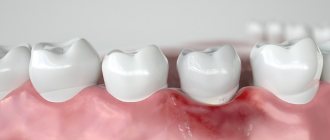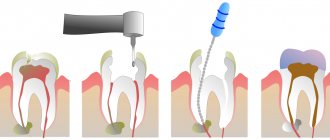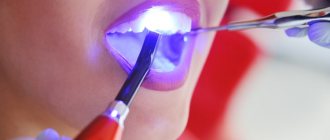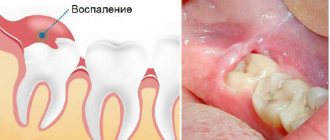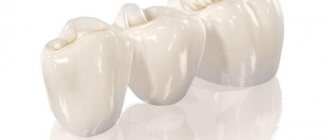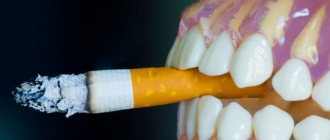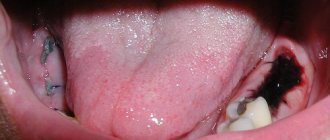In modern dentistry, when treating caries at different stages, doctors often install light fillings. This is explained by the advantages of photopolymer composite material compared to the traditional composition. The light filling looks natural (often the color does not differ from tooth enamel), is resistant to stress, and less toxic. In addition, its installation is easy and does not take much time.
To maintain the results obtained by the dentist, you must follow several recommendations. And then the material will not peel off and collapse.
Many patients are interested in the question of how long they should not eat or drink after the doctor fills a tooth with composite material. And in general, are there any restrictions? Now we will tell you everything in detail.
What is a light seal?
The photopolymer composite material that the dentist uses consists of a mixture of resins, silanes and filler.
It hardens when exposed to ultraviolet radiation, so when filling a tooth, the doctor uses a special lamp that creates waves with a length of 450 Nm in the blue spectrum. For a high-quality result, he applies the composite material layer by layer, exposing each layer to light. At this stage, primary polymerization occurs. Then, within 24 hours, the chemical bonds stabilize and the filling finally hardens. In this regard, the doctor gives certain recommendations, compliance with which guarantees the durability of the material - the filling lasts 5 years or more.
Problems when wearing temporary dental fillings
Sometimes it happens that a temporary filling is too soft, then it needs to be changed so as not to disturb the chewing process. It happens that a temporary filling crumbles, tastes bitter, has an unpleasant taste in the mouth, or the tooth hurts when pressed - these are also reasons for premature removal. But the most dangerous situation is when the filling falls out. If you have any concerns about filling, you should contact your dentist.
Cementing with arsenic is becoming less common due to the unsafety of this method. Light-curing pastes dry instantly, have a natural color and do not harm the body, and they can be installed for 15-20 Euros.
You can get even more information at a free consultation at dental clinics in Estonia, a full list of which is presented on our website.
Advantages of photopolymer material
This differs from other types of composite materials:
- The ability to control the hardening process. The doctor fills the tooth without haste, applying layers of material as carefully as possible. The composition is plastic, hardens only when exposed to an ultraviolet lamp.
- Safety for the patient's health. Photopolymer material is characterized by low toxicity, so it is used even in pediatric dentistry.
- The ability to create a filling of the desired shade. She won't stand out.
- Durability. It is due to good adhesion to hard tissues. Typically, the service life of a photopolymer filling is at least 5 years. With careful handling and high-quality teeth cleaning, its service life increases.
- Ease of finishing. The composite can be polished well, so the filling does not create discomfort - it will not scratch the mucous membrane of the tongue and cheeks.
An experienced dentist can easily give the crown the desired shape, so the filled tooth looks natural.
Use of chemical fillings
Chemical fillings are compounds of chemically active elements. When mixed, they react, which causes rapid hardening. There are several types of these fillings with different characteristics. Thus, composites are a combination of several components with a high level of plasticity, while glass ionomers are a combination of synthetic powder and gel in a proportion that allows one to obtain the consistency of the desired viscosity.
It can be concluded that the standard time during which a patient should limit eating after having a filling installed is 2-3 hours. This time is enough for the artificial enamel to completely harden. Doctors do not recommend excessively loading a filled tooth during the day.
The basis of the diet during this period should be porridge, broth-based dishes, grated fruits and vegetables. You should refrain from eating foods that have coloring, and you should limit smoking. All this will help the new filling achieve maximum hardness and adhesion to tooth tissue. In each specific case, you should act in accordance with the recommendations of the attending dentist.
Types of light seals
The dentist chooses a photopolymer material depending on the location of the tooth and the task at hand - will it be caries therapy or the elimination of a non-carious defect on a unit.
There are 3 types of material:
- consisting of large particles - preferable for chewing molars, such a filling will be resistant to abrasion;
- consisting of microparticles - relevant in the case of treating caries on the front teeth and restoring the aesthetics of the units;
- nanocomposite - durable, reliable, aesthetic, but has a higher cost.
Before deciding to install a light filling, the doctor will definitely evaluate the location of the caries. If the lesion is in a hard-to-reach place, you will have to choose another material due to the impossibility of high-quality polymerization.
Amalgam filling
Amalgam is an alloy of silver or copper with various metals, each of which performs its own function:
- Silver gives strength and antiseptic properties.
- Tin regulates the hardening process.
- Copper increases the strength of the alloy.
- Zinc prevents oxidation.
- Mercury is needed to obtain a plastic, quickly hardening mixture.
Amalgam fillings have both advantages and disadvantages. They are durable and affordable, but have low aesthetic properties (characteristic metallic luster, change in enamel color). These fillings are placed primarily on the back teeth (molars).
Metal fillings have a long hardening period, so dentists recommend that patients refrain from eating for 4-5 hours after the filling procedure. Do not consume foods that can cause metal oxidation. Since the dental alloy is insensitive to moisture, there are no restrictions on fluid intake.
When can a light seal be placed?
The photopolymer composition is considered universal, therefore it is widely used in dentistry. There are a large number of pathologies for which the dentist prefers this composite, including:
- caries;
- erosion and necrosis of enamel;
- fluorosis;
- wedge-shaped defect;
- pulpitis and periodontitis (light filling is placed at the final stage of disease treatment);
- dental injuries and chipped enamel;
- pathological abrasion of units (a photopolymer filling is installed for temporary restoration of the tubercles).
In addition, the dentist uses this filling material to give the stump the required size and shape before prosthetics with fixed dentures. Thanks to a wide palette of shades and good strength after hardening, the photopolymer composition is suitable for any units in the series; it is also chosen for aesthetic restoration.
If you have placed a temporary filling
A temporary filling is installed to protect the tooth between procedures and partially restore the function of chewing food.
In the case of using such a seal, there are a number of restrictions:
- 1
It is necessary to refuse food for at least 2 hours. - 2
Do not eat hot or cold food.
- 3
Use caution when brushing your teeth.
- 4
Avoid chewing gum and sticky, chewy foods such as caramel.
A temporary filling is not very durable, so you should chew food on the opposite side of your mouth before installing a permanent one. The answer to the question of how much you can’t eat after a temporary filling is given by your dentist. It depends on the location of the filling, its strength and complexity.
How is the filling installed?
First, the doctor prepares the tooth for restoration - removes pathological tissue and forms a cavity, removing softened dentin and enamel. This ensures the durability of the filling. If the tooth is severely damaged, the dentist removes the nerve, installs a pin, and only then proceeds to filling the canals and forming a crown.
Before starting work with photopolymer material, he etches the cavity with acid to clean the walls of sawdust and other foreign particles formed during drilling of the affected tissue. This manipulation helps to open the dentinal tubules, which improve the fixation of the filling.
After this, the doctor applies an adhesive material, which acts as a connecting link between the tooth and the photopolymer composition. After illuminating it, the doctor applies the filling material in small portions in layers, carefully pressing it to the bottom and walls of the cavity. Each layer is exposed to ultraviolet light. When the dentist completes the modeling, he grinds and polishes the surface of the filling.
Composite
Today, the physical properties of new filling powders have changed. They are successfully used in cases where deep caries has led to the appearance of large abnormal cavities. Composites fully meet modern standards.
- They have excellent cosmetic and practical characteristics.
- They are suitable for reconstruction of frontal, masticatory units.
- They are installed for children and expectant mothers.
- The material hardens directly in the dentist's office. He exposes the pad to a lamp with ultraviolet rays.
- The substance can be easily given the desired shape.
After the light filling, you can drink water and eat after the sensitivity of the receptors returns. Indeed, with numbness of the lips, tongue, and palate, it is easy to cause mechanical and thermal damage to these areas. Therefore, in this situation, it is advisable to eat no earlier than an hour later, especially if a composition with epoxy resins was used. It is better not to consume drinks and foods such as beets, wine, tea, blueberries, coffee for 24 hours. Also, you should not smoke during the day, as nicotine slows down wound healing. If you follow your doctor's recommendations, this will minimize the risk of the pad falling out or becoming deformed.
To eat or not to eat: what recommendations does the doctor give?
After installing the light seal, you can eat and drink immediately. This is its significant advantage over a cement filling. But in cases where dental procedures were performed under local anesthesia, the doctor recommends refraining from eating for 1-2 hours. This is due to the fact that due to decreased sensitivity, the patient may injure the mucous membrane of the tongue or cheeks while chewing food. The damage will cause discomfort.
Since the material will finally harden after 24 hours, you should avoid hard foods (nuts, apples, etc.). It is better to give preference to soft food. On the first day after filling, it is advisable to quit smoking. This is due to the fact that the material may turn yellow and the healing of tissues that have been exposed to dental treatment may deteriorate.
To maintain the aesthetic appearance of the filling, for 2-3 days you should not consume foods and drinks that can stain the photopolymer material. Among them:
- coffee;
- red wine;
- pomegranate, cherry and other freshly squeezed juices;
- carrot;
- beets (including as part of first courses, salads, etc.);
- blueberry;
- chocolate;
- carbonated drinks containing dyes.
You should drink natural juices with caution, even if, in your opinion, they will not stain the filling (it is better to use a straw), strong black tea, and eat strawberries and cherries. It is worth limiting the amount of sweet and starchy foods in your diet. It is advisable to avoid the consumption of cold and hot foods, as well as their simultaneous intake. Temperature contrast can negatively affect both the filling itself and the tooth tissues.
Let us draw your attention to one nuance: some dentists still advise refraining from eating for 2 hours and drinking drinks for an hour in order to reduce the risk of complications after filling a unit.
What diseases require the installation of a temporary filling?
Installing a temporary filling assumes that the treatment will occur not in one, but in several stages. But, despite the time costs, such treatment is effective. It makes it possible:
- stop inflammatory processes if teeth are in disrepair;
- prevent the development of complications that may arise after treatment of caries and other diseases;
- diagnose the disease if the caries is deep enough - the dentist uses temporary cement so as not to put a permanent filling, and monitor the “behavior” of the tooth.
There are the following indications for installation:
- Treatment of pulpitis.
- The need to kill the nerve with special pastes.
- Dentin augmentation if the pulp is exposed and the teeth are affected by serious caries.
- Carrying out deep cleaning of teeth.
- Creating an inlay for a permanent filling.
- Impossibility of urgent treatment, postponing the procedure for some time.
Temporary
Installing a temporary filling is a fairly common procedure. To make such a substance, liquid and special powder are used. Its composition will determine the drying time of the lining. Often, after removing the nerve, before filling the canals of the masticatory organs, the cavity is closed using a temporary structure. As soon as the anesthesia wears off, you can immediately start eating. Eliminate solid foods from the menu for a day to prevent the pad from crumbling.
Since the temporary filling does not reach complete hardening immediately, especially its internal part, patients are advised to eat after two to three hours. At first, you should not eat nuts, crackers, or chew chewing gum. Although such an overlay is installed for a short time, then removed and replaced with a permanent substance, it also needs to be taken care of. This will help prevent cracking and other types of damage. The best option is to ask the dentist in advance what substances the veneer is made of. Then it will be clear how long you should wait before eating.
How long is it temporary?
The period for installing such a filling depends on the purpose and clinical situation. It can range from 3 days to several months. If the doctor uses arsenic-based paste, then further treatment is carried out after 3-5 days, a maximum of a week. You cannot walk with arsenic in your tooth for any longer, as it can not only kill the nerve, but also destroy healthy tissue.
If the material used is necessary to protect against food and bacteria getting inside the canals during their sanitation or treatment of inflammation, it can remain in the tooth for several weeks. For longer treatments, the dentist may replace temporary fillings if a new dose of medication becomes necessary.

